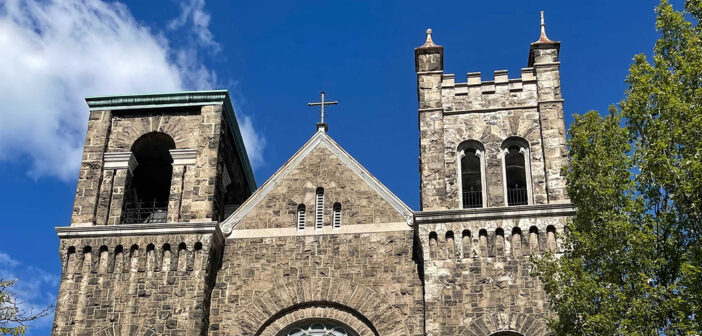Brenda K Grow is the Branch Manager for the Bethlehem Area Public Library South Side Branch. This editorial, written by Grow, is about the development of churches and immigration by people of different ethnicities in South Bethlehem.
The South Side of Bethlehem has a rich history around traditions, religion, food, architecture and languages.
Have you ever wondered why there are so many churches on the South Side of Bethlehem?
Between the 1880s and 1920s, there were many people immigrating to the United States from European countries such as Slovakia, Poland, Hungary, Germany, Russia, Ireland and Italy. Many immigrants came to work in steel mills, namely Bethlehem Steel. These people also chose to live near their place of employment.
Skilled and unskilled work was available and sought after. Each ethnic group wanted their own house of worship, so the churches were built.
Many churches are beautiful in their architecture, and many have steeples and towers. Members of each ethnic group would live close to each other thereby forming neighborhoods of the different ethnicity.
The South Side is a story of industry and immigration but also about the risks, survival and the struggle for identity and hopefully success and achievement. The South Side became known as a cultural hub for working-class families seeking a better life that held great opportunities.
Hispanic immigration took place in the 1940s, mostly comprised of Puerto Ricans. A second wave of Hispanic immigrants came in the 1970s. Coming to South Bethlehem allowed them to go back and forth between here and Puerto Rico very easily.
They came to South Bethlehem for the same reasons European immigrants had: employment opportunities in the textile and steel mills. These employment opportunities gave them upward social and economic mobility as a result of steady and stable income as blue-collar workers.
By 1970, the South Side of Bethlehem was home to a great mix of ethnic backgrounds including: Puerto Rican, Hungarian, Slovak, Polish, Italian, Irish and Portuguese, native English speaking residents and Lehigh University students.
This mix of ethnic backgrounds has made the South Side a rich, varied cultural area.
Longstanding families on the North Side of Bethlehem failed to understand the various foreign populations of the South Side. The image of the South Side was one of noise, fire and smoke from Bethlehem Steel and multicultural crews who maintained the furnaces and worked with hammers and presses, thereby portraying a number of negative stereotypes.
Today, the South Side remains a community of diverse income and ethnicity. Residents and visitors value the different ethnic backgrounds, their cultures and history.
The Community Action Development Corporation of Bethlehem applied for and was recognized as a Neighborhood Partnership Program through Pennsylvania’s Department of Community and Economic Development.
The South Side Vision Master Plan, a partnership between Community Action, the City of Bethlehem, members of the community and the South Side Vision Steering Committee, was implemented in 2014 and is in effect until 2024.
This partnership has helped revitalize the South Side of Bethlehem for a number of years. One of the projects was the greenway, which is a fabulous area for visitors and residents alike. The Bethlehem Skateplaza is another wonderful addition to the South Side of Bethlehem.






Comment policy
Comments posted to The Brown and White website are reviewed by a moderator before being approved. Incendiary speech or harassing language, including comments targeted at individuals, may be deemed unacceptable and not published. Spam and other soliciting will also be declined.
The Brown and White also reserves the right to not publish entirely anonymous comments.
3 Comments
I think there were at least three Catholic churches within easy walking distance from the mid 60’s Lehigh campus. Two I actually attended were the closest to the Centennial Houses. One you could hit with a ball thrown from Congdon. If you visit the spot you will know why.
I think the writer misrepresents the view of the Northside families back when the Bethlehem Steel plant was operating in the last century.
There were not negative stereotypes of the ethnic residents & workers that produced the steel that powered the economic engine to build America’s infrastructure. The Southside was in fact one of noise, fire & smoke but those flames represented economic vitality for Bethlehem. Those items were not viewed negative in that era.
Those steelworkers were American hero’s during WW2 & during the post war economic growth that saw those multicultural families& their children live the American dream they sought when they immigrated
Residents of both sides of the river including students like myself at Lehigh viewed the fire coming from the top of the blast furnaces a positive sign for employment opportunities.
I didn’t like the negative implication regarding Northside residents & fostering racial or cultural divide.
It wasn’t only fire coming from the furnaces. I remember the smell around Lehigh when it rained but realized there was more that just smell when I sat behind a bald Lehigh fan in Taylor Stadium and noted the variety of particulate matter that settled there during a Lehigh loss.